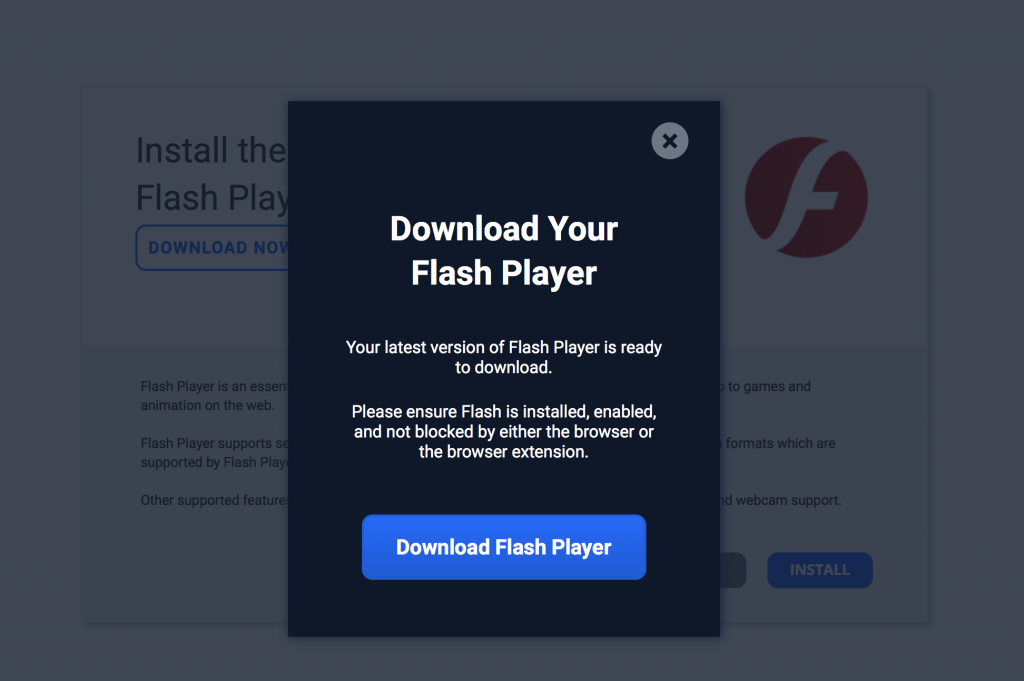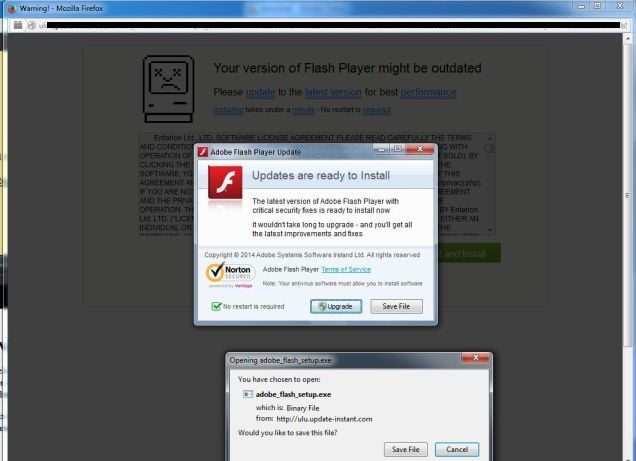

- #FAKE ADOBE FLASH ON MAC MALWARE UPDATE#
- #FAKE ADOBE FLASH ON MAC MALWARE SOFTWARE#
- #FAKE ADOBE FLASH ON MAC MALWARE CODE#
But what they have done is make the disguise even more convincing by somehow duping Apple into approving their code as legitimate.Īccording to Wardle, once he notified Apple about the problem it was quick to revoke the certificates of the offending app – and thus remove the notarization status.
#FAKE ADOBE FLASH ON MAC MALWARE UPDATE#
When I first wrote about Shlayer in January 2019, it was posing successfully as a Flash Player update and it seems that the criminals behind the attacks haven’t felt any need to change that.
#FAKE ADOBE FLASH ON MAC MALWARE SOFTWARE#
However, in this case, the malicious code had actually received Apple’s stamp of approval. Fake software updates pushed as pop-ups or page redirects in your browser are a common way used by hackers to spread malware. Normally, a lack of notarization should mean that the app cannot be run on users’ Mac computers and laptops. Security researchers Patrick Wardle and Peter Datini have uncovered an adware campaign hosted on a website that tricked users into downloading a bogus update to Adobe Flash Player. Unfortunately, that seems to be exactly what has happened. Might users have a false sense of security – believing that if Apple’s vetting has given an app the all-clear and no message is displayed on running, that it must be safe to run?

Remove fake Adobe Flash Player update virus from Mac - MacSecurity. That’s all great in theory, but what if Apple accidentally approves a malicious app. Remove Adobe Flash Player is out of date virus (Removal Instructions) - updated Mar. If an app isn’t notarized, you’re prevented from running it on macOS. It’s different from a regular “app review” of the software, and since February 2020 it has become a requirement for even Mac software distributed outside the Mac App Store to be notarized by Apple to allow it to run on macOS Catalina, the latest shipping version of the Mac operating system. The hijacker can redirect you and will display a fake Flash Player Update.īrowser settings which are altered are the homepage, search engine and the new tab.A really cool feature of Apple macOS, from the security point of view at least, is that all software distributed via the Mac App Store has to be checked by Apple for malicious content – a process known as “notarizing.” The threat might change the start page, new tab, and search settings for the browser applications you have on your computer device.Įach browser application on your Mac could get affected. While using its services, you can find yourself on unfamiliar pages with lots of pop-ups and sponsored content stemming from the files that the fake update will put on your machine. Additionally, your search engine might be switched and the redirect pop-up could push different advertisements, generating revenue for its authors. The notification states that they need to update their Flash player (which is not true).

If you use the Firefox or Chrome browser, open its extension list and do as in Step 4. If there are no extensions, or if you can't launch Safari, skip this step. According to a recent Kaspersky investigation, the Shlayer malwarewhich deploys an Any Search bar on a victim’s computer through fake Adobe Flash updates, of all thingsis the. Never-before-seen Mac malware, dubbed OSX/CrescentCore. If any extensions are listed, post a screenshot. A new malware is targeting Macs with new tactics to sniff out antivirus and virtual machines. Shlayer utilizes a very familiar method to infect its target, namely through fake Adobe. However, a pop-up shows up making redirects and landing Mac users on different pages where they are presented with a notification. Open the Safari preferences window and select the Extensions tab. Fake Flash Player Update looks like a normal update for the Adobe Flash Player.


 0 kommentar(er)
0 kommentar(er)
